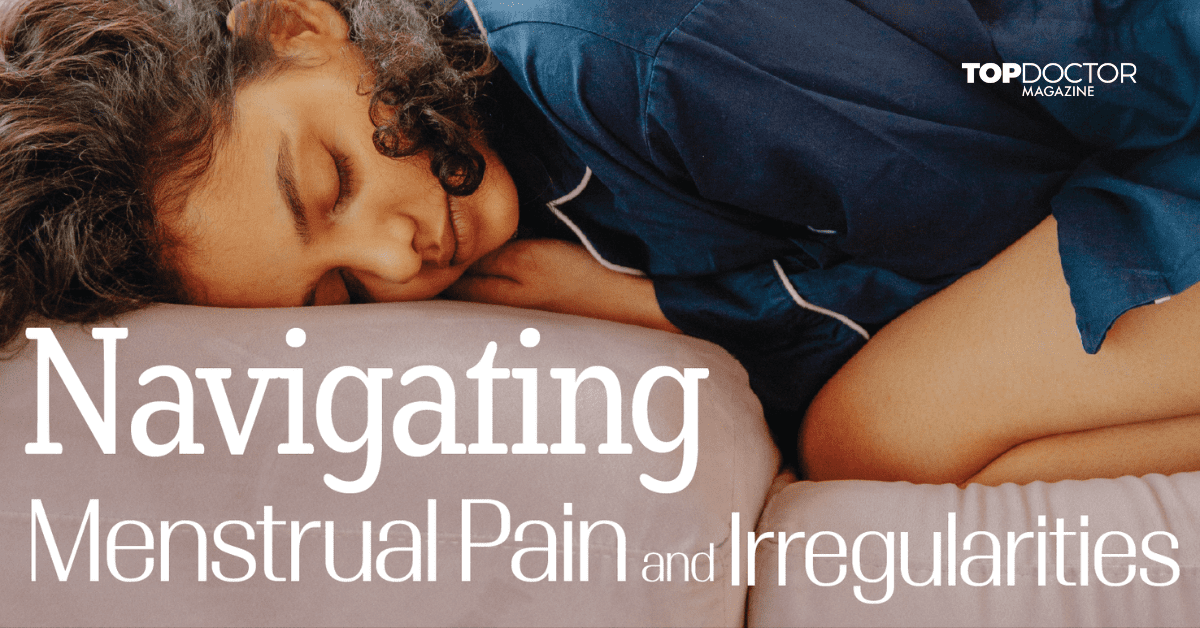Introduction:
Menstruation is a natural process that occurs in the lives of most women. While it is a normal part of a woman’s reproductive cycle, many experience discomfort and irregularities during their periods. Menstrual pain and irregularities can significantly impact a woman’s physical and emotional well-being. This article aims to provide a comprehensive overview of menstrual pain and irregularities, their potential causes, and effective management strategies.
Understanding Menstrual Pain:
Menstrual pain, also known as dysmenorrhea, refers to the cramping sensation experienced by women during menstruation. It is one of the most common menstrual complaints and can vary in severity. Primary dysmenorrhea occurs without any underlying medical conditions, while an underlying condition, such as endometriosis or uterine fibroids, causes secondary dysmenorrhea.
Causes of Menstrual Pain:
- Prostaglandins: During menstruation, the uterine lining releases chemicals called prostaglandins, which cause the uterus to contract, resulting in pain.
- Hormonal imbalances: Fluctuations in hormones such as estrogen and progesterone can increase menstrual pain.
- Endometriosis: A condition where the tissue that lines the uterus grows outside of it, leading to severe pain during menstruation.
- Uterine fibroids: These are non-cancerous growths in the uterus that can cause pain and heavy bleeding.
Managing Menstrual Pain:
- Over-the-counter pain relievers: Nonsteroidal anti-inflammatory drugs (NSAIDs) like ibuprofen or naproxen sodium can help alleviate menstrual pain by reducing prostaglandin levels and easing uterine contractions. Always follow the recommended dosage instructions and consult a healthcare provider if the pain persists or worsens.
- Heat therapy: Applying a heating pad or a warm bath can provide soothing relief by relaxing the muscles and reducing cramping.
- Exercise and relaxation techniques: Regular physical activity and techniques like yoga, deep breathing, and meditation can help alleviate menstrual pain by promoting muscle relaxation and reducing stress.
- Hormonal birth control: Certain contraceptives, such as oral contraceptive pills, hormonal patches, or intrauterine devices (IUDs), can help regulate menstrual cycles and reduce pain.
Understanding Menstrual Irregularities:
Menstrual irregularities refer to abnormal variations in the menstrual cycle, such as cycle length, duration, or flow changes. Common types of menstrual irregularities include:
- Amenorrhea: Factors such as pregnancy, hormonal imbalances, polycystic ovary syndrome (PCOS), or excessive exercise can cause the absence of menstrual periods.
- Menorrhagia: Excessively heavy or prolonged menstrual bleeding may indicate underlying conditions like hormonal imbalances, uterine fibroids, or bleeding disorders.
- Oligomenorrhea: Infrequent or irregular periods characterized by longer gaps between cycles or irregular bleeding.
Managing Menstrual Irregularities:
- Lifestyle modifications: Maintaining a healthy lifestyle, including regular exercise, a balanced diet, and stress management, can help regulate menstrual cycles and reduce irregularities.
- Hormonal therapies: In cases of hormonal imbalances, healthcare providers may recommend hormonal therapies, such as birth control pills or hormone replacement therapy, to regulate the menstrual cycle.
- Medications: Doctors may sometimes prescribe medications like tranexamic acid to manage heavy menstrual bleeding.
- Surgical interventions: In severe cases of menstrual irregularities caused by conditions like fibroids or endometriosis, surgical interventions may be necessary.
Conclusion:
Menstrual pain and irregularities can significantly impact a woman’s quality of life, but they are not something to suffer silently. Women can navigate these challenges and find relief by understanding the potential causes and effective management strategies. Remember, it is essential to consult a healthcare provider if you experience severe or persistent pain or notice any significant changes in your menstrual cycle, as they can help determine the underlying cause and provide appropriate treatment options.
At TopDoctor Magazine, our mission is to foster connections within the health and wellness community, acting as a vital bridge between doctors and patients and facilitating collaborations between medical companies and healthcare professionals.
Our purpose extends to empowering our readers, providing them with the knowledge to make well-informed healthcare and lifestyle decisions.
We take pride in being the ultimate resource for interviews with health and wellness leaders, delivering trending medical news, and covering a wide range of healthy living topics.






0 Comments